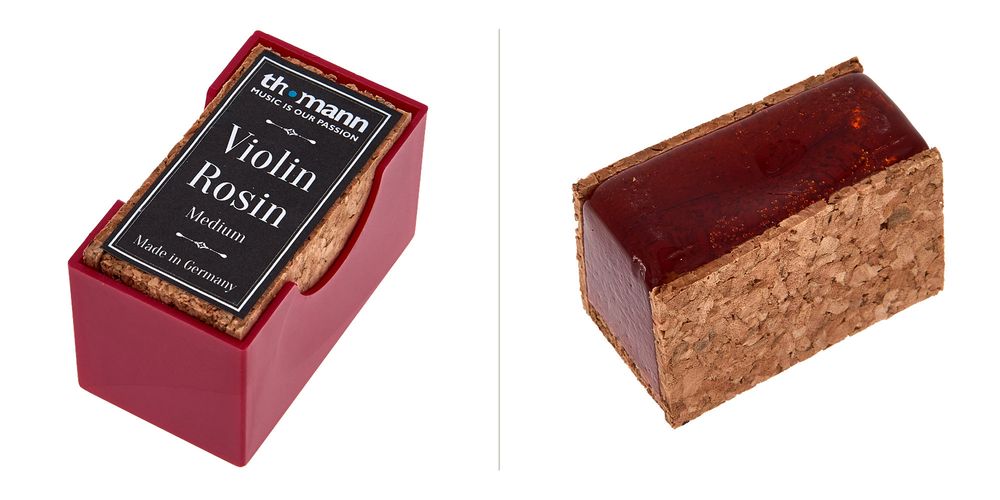3. How Sound is Produced
Imagine witnessing the bow's hair caress the strings in slow motion, observing the string adhere, stretch, and snap back—a cycle that occurs lightning-fast, up to a hundred times per second. This jerky sliding action, known as the "slip-stick effect," triggers the strings to vibrate, unleashing the magic of sound.
To make the bow hair get this "sticky" effect, it's coated with a layer of rosin.
But what is rosin exactly?
Rosin is nothing but resin. It's derived from coniferous trees like pines and spruces, undergoes purification by removing turpentine oil. What remains is a purified resin with hues ranging from golden to deep amber. Intriguingly, its name traces back to Kolophon, an ancient city in present-day Turkey, famed for its exceptional rosin.

Rosin
Mastering the art of applying rosin:
Here are the steps:
1. Begin by ensuring the bow is sufficiently tensioned, maintaining a distance between hair and stick about the stick's diameter.
2. Prepare the rosin before initial use by gently roughening it with fine sandpaper and removing any dust.
3. Hold the tensioned bow in one hand and the rosin in the other.
4. Glide the rosin smoothly along the bow hair, covering from frog to tip, repeating the motion around 15 to 20 times.
Pro Tip: Rosin's adhesive quality lessens over time, necessitating regular application to keep your bow in perfect harmony. Remember, different instruments require specific types of rosin, so choose accordingly to match your instrument's needs.


